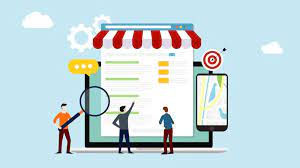
A Beginner’s Guide to Working Out a Debt Repayment Plan
Becoming debt-free can be overwhelming and time consuming. However, there are strategies that can help make the process less painful and faster than you think.
The first step is to create a list of all your debts, including their minimum payments and interest rates. Next, you should come up with a budget that will help you pay off your debts in full.
Make a List
Making a list is an important way to stay organized. It helps you track all the payments due and remember which ones are most important to pay.
You can keep a list in a notebook or a bill planner. Both of these methods allow you to write down the name of the bill, the date it is due, and the payment amount.
Make sure that your list is easy to read and contains all the bills you need to pay. The checklist should also include a space for confirmation numbers, reference numbers, or any other information that is necessary to make sure you are paying the correct amount each month.
Create a Budget
One of the best ways to begin putting your finances in order is to create a budget. This can be done using any budgeting method that works for you.
The first step in creating a budget is to compile all your expenses and income. This includes all your bills, pay stubs, and receipts from the past three months.
Once you have your lists of expenses, you can start analyzing them and making changes where necessary. This can include reducing expenses in some areas and increasing them where possible.
Another good way to keep track of your expenses is to use a budgeting app. This will allow you to see exactly how much you spend on certain categories each month, and help you find ways to reduce your spending so you can put more money toward paying off your debts.
Once you have a good idea of how much you spend on each of your expenses, you can make a list of your financial goals. These should be SMART goals that focus on saving money and reducing your debt.
Look for Ways to Cut Expenses
There are a number of ways to reduce your spending in order to free up extra funds for debt repayments. Generally speaking, this involves tracking your spending and creating a budget based on your expenses.
A budget can help you determine how much you need to spend each month on essentials and non-essentials, and also how much you can save each month. This will help you see where your money is being spent each month and where there are wiggle room that can be used to pay down your debts.
The best way to do this is to use a 50/30/20 budget, which allocates 50% of your income to essentials like rent or mortgage payments and bills, 30% towards nonessentials or “wants,” and 20% towards saving.
This might mean ditching cable, cooking more meals at home, or reducing your take-out food budget. Using the above tactics can help you pay off your debts faster, and save more money for things you really want.
Make Extra Payments
While making extra payments may seem like an obvious step, it’s important to know how you can make them work best. Paying extra on a loan can help reduce the term of your debt and save you money on interest.
However, make sure that you understand any fees associated with extra repayments, and that you apply any additional money toward the principal. If you don’t, the money may go to paying off interest instead of your loan’s principal.
Once you’ve figured out how much extra you can afford to pay, use it to pay down your highest interest rate debt first. This strategy will help you pay off your debt more quickly and save you money on interest.
Once you’ve paid off your highest interest rate debt, you can start making payments on your other loans. You can also use any additional cash you receive to pay off your debt, such as a bonus from work or tax refund.


